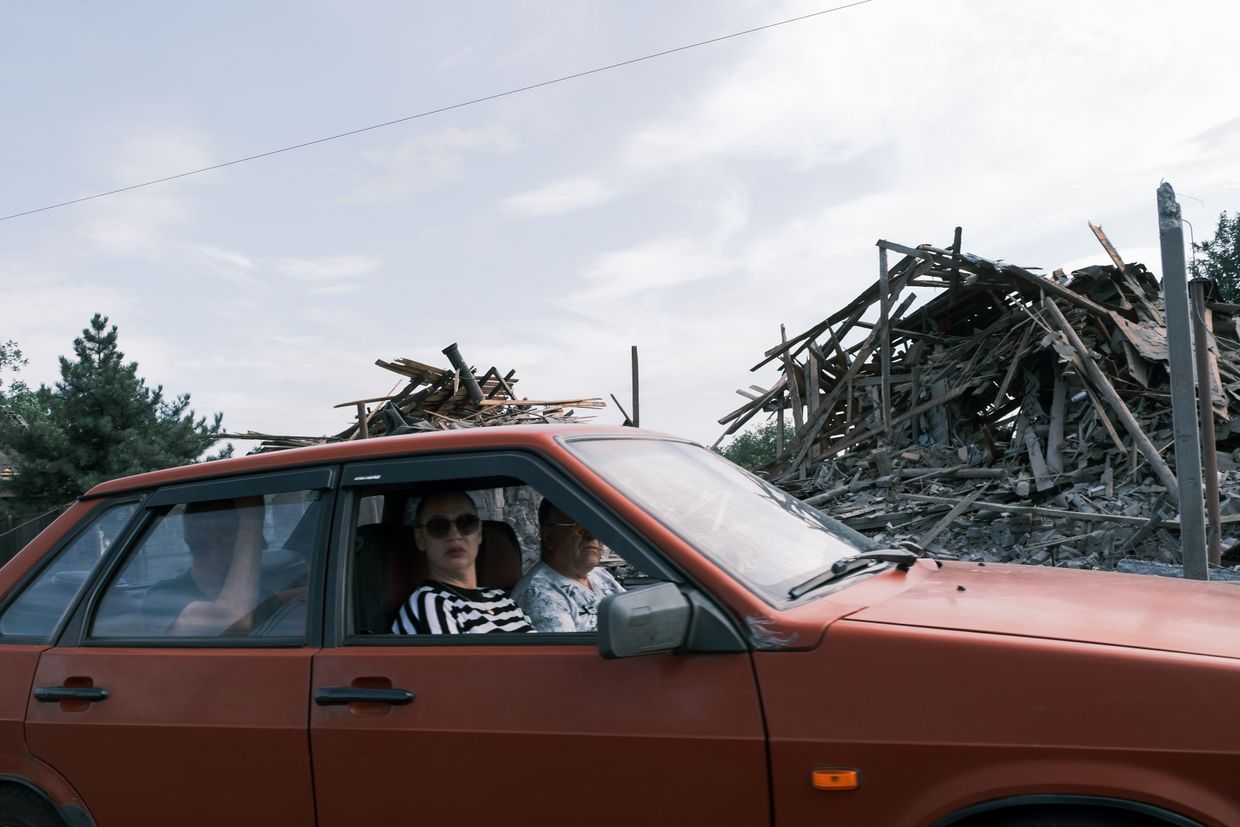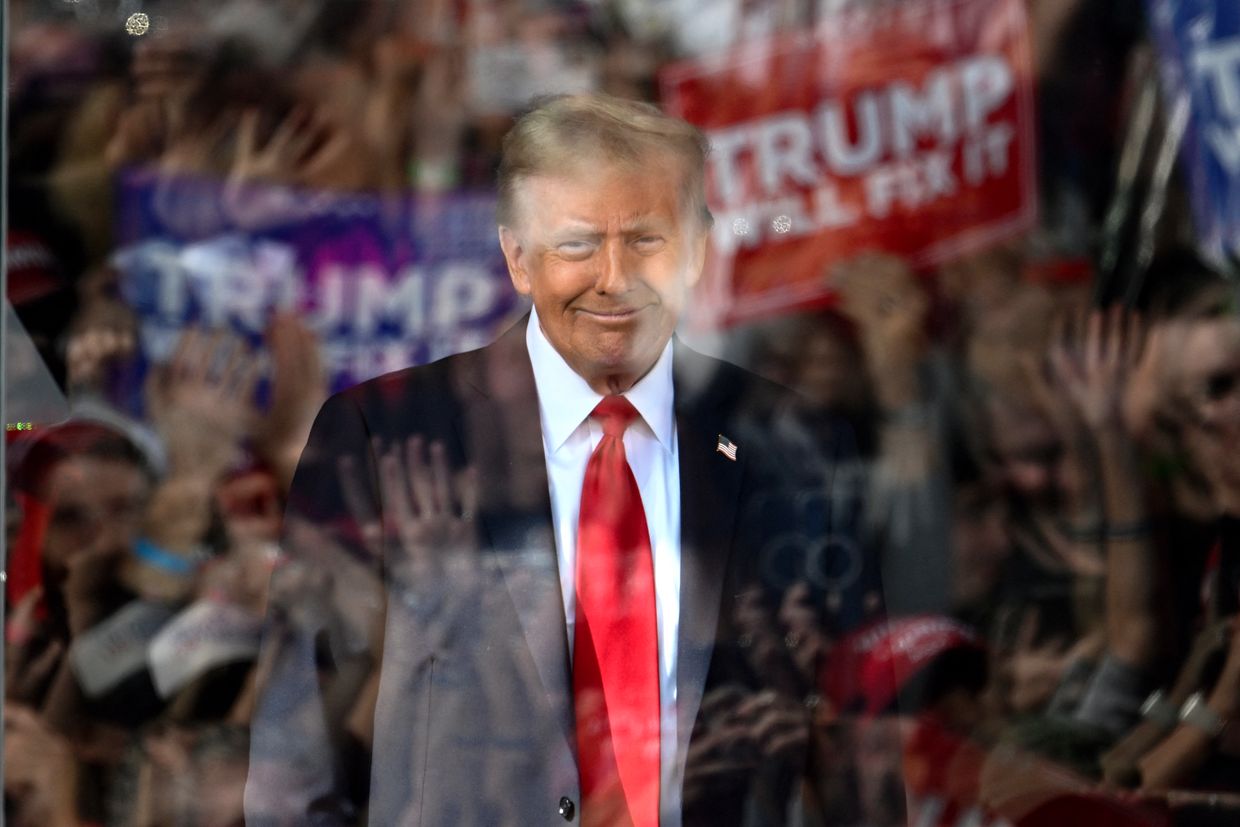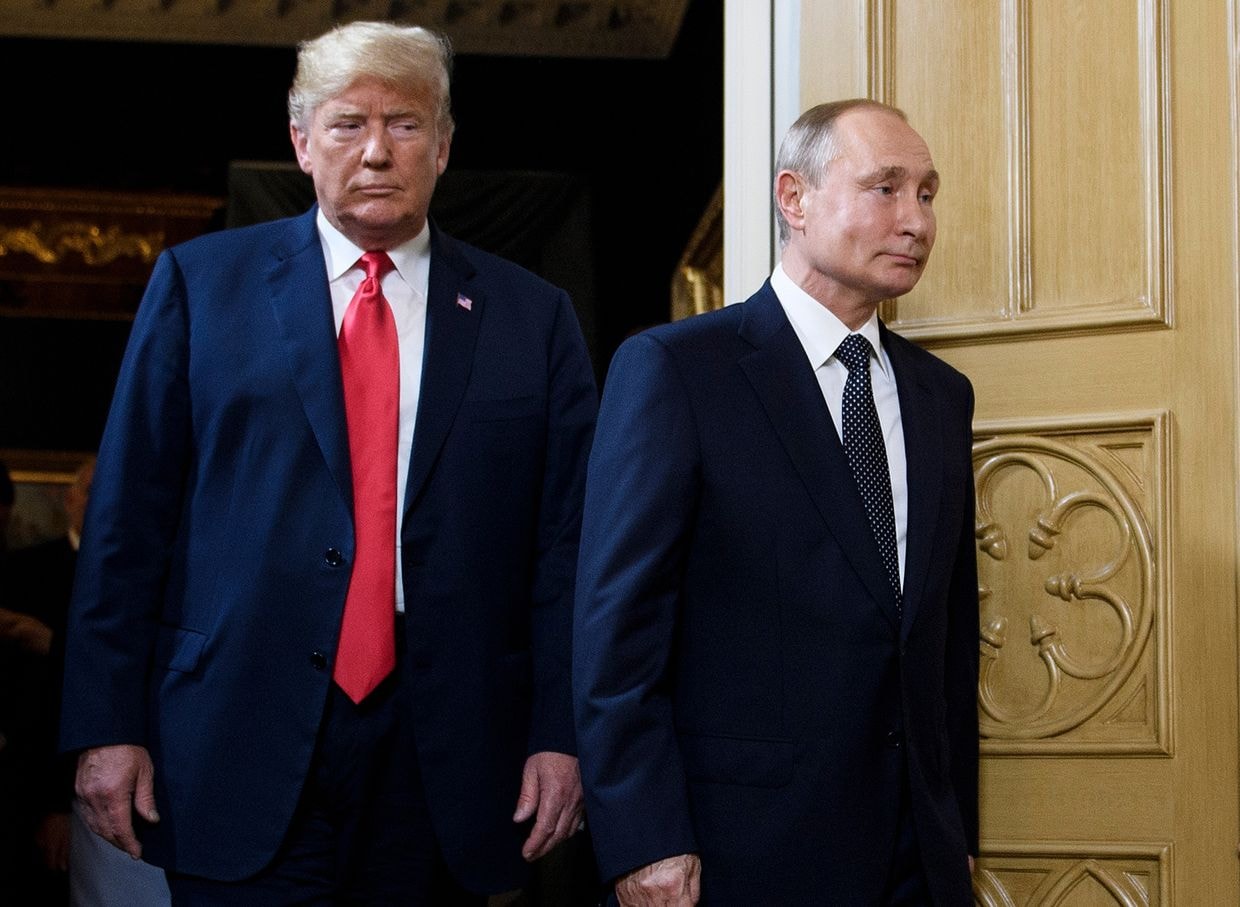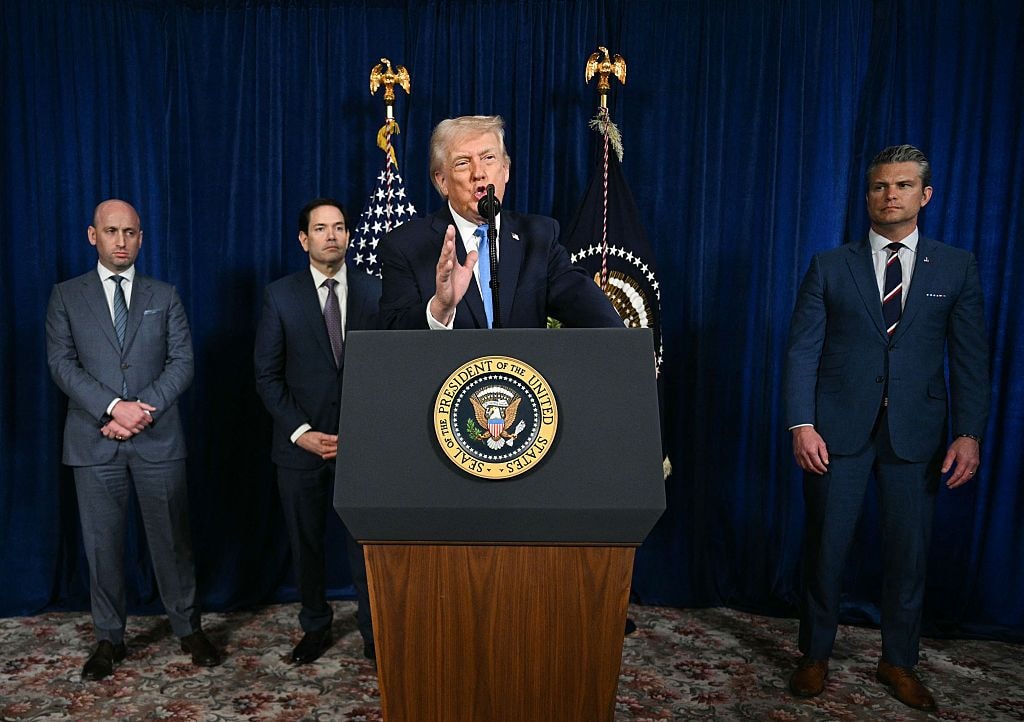
Once liberated Kupiansk braces for worst as Russian troops approach, and future Western support looks uncertain
A view of damaged buildings as authorities in Ukraine's Kharkiv Oblast have announced the start of a mandatory evacuation for the key front-line city of Kupiansk, Ukraine on Oct. 16, 2024. (Fermin Torrano/Anadolu via Getty Images)
KUPIANSK — Volodymyr paused his Sunday stroll from a shopping center in Kupiansk to take pictures of rubble from a Russian strike that almost killed his wife late last month.
"It was broad daylight when they struck," he said. "Our only luck was that my wife was in the kitchen, so the flying glass did not hit her," Volodymyr said, who lives with his wife only a few meters from the epicenter of the explosion.
Fearing a return of Russian occupation to his increasingly bombed-out front-line city in Ukraine's northeastern Kharkiv Oblast, Volodymyr refused to provide his full name.
The 1.5-ton thermobaric bomb that Russian troops dropped next to the shopping center at the edge of the city killed a 73-year-old woman and injured others.
The use of such destructive weapons against civilians marks the Russian army's upscaled push to occupy the latest Ukrainian city, enduring more suffering and uncertain prospects.
One recent Russian strike on Kupiansk disrupted central water supplies throughout the city, forcing the people left in the city, most of them retirees, to roam streets carrying buckets from wells to their homes.
"There has been no water for two days now, and we're afraid that soon there will be no electricity and (natural) gas," said Ivana in early November, a retiree who glanced into the sky nervously, fearing the possibility of Russian drone strikes from above.
"We feel abandoned," she added as Russia's army sped up a grinding advance towards Kupiansk.


Russian troops ramped up their efforts near Kupiansk in early September and approached the city's industrial outskirts in the northeast. Earlier in November, Ukrainian forces successfully repelled Russian attempts to break into the city.
The crowd-sourced monitoring website DeepState also reported on Nov. 26 that Ukrainian forces had completed clearing Kupiansk of Russian soldiers. The pressure on the city remains, with Russian troops geared up to try again in the near future.
Divided by the Oskil River, Kupiansk lies at a critical junction between the Russian-occupied Luhansk Oblast and the adjacent Kharkiv Oblast, which Ukraine largely liberated during a surprise counteroffensive in autumn 2022.
Now, with Russia's increasing offensives across the entire front and the U.S. support for Ukraine in the long run remaining uncertain, residents of Kupiansk are expecting the worst to come.
U.S. President-elect Donald Trump had promised to end Russia's war swiftly, without providing a clear scenario on how he plans to achieve such a result. The president-elect's inner circle has also been vocal, floating the idea of freezing the war along the current front lines leaving cities like Kupiansk and the residents that remain on the edge or in Russia grip indefinitely.
Frozen front lines could leave more Ukrainian towns smoldering in limbo
Russia has a poor record of keeping to ceasefire agreements that predate its full-blown invasion of Ukraine by almost a decade.
"We already went through this during the first and second Minsk agreements, through various truces, freezes, but in all cases, Russia always violated these agreements," Serhiy Kuzan, chairman of the Ukrainian Security and Cooperation Center, told the Kyiv Independent.
His comments refer to two ceasefire agreements, one in 2014 and another in 2015 brokered by the West, that froze front lines in Ukraine's eastern Donetsk and Luhansk oblasts after Russia occupied part of those regions.
A number of towns and villages were left on the front lines, experiencing occasional shelling, lack of basic necessities, and lacking the ability to escape the years-long war.
A visit to Kupiansk today largely mirrors the devastation brought to the towns left on the front lines. Kupiansk is an increasingly abandoned city.
Despite a mandatory evacuation order for all citizens announced in mid-October, locals estimate several thousand residents remain despite the mounting risks.
The city is experiencing the third siege in three years after it was briefly occupied by Russian forces in 2022, then liberated during the successful Ukrainian counteroffensive in the autumn of the same year.
Back then, the Ukrainian army's surprise counterattack pushed the Russian troops to about a dozen kilometers from the city's outskirts.
Two years after the retreat, Russia's army has doubled its efforts to recapture it. Since early September, they have advanced several kilometers, approaching the city's eastern outskirts. Earlier this month, Ukraine's army said it was repelling enemy attempts to enter the city.
Kuzan, a native of Kharkiv Oblast, said Ukraine's army is in a good position to hold the city's eastern outskirts against Russian incursions "provided that there is a sufficient amount of ammunition and materiel."
However, that remains in doubt as President-elect Trump vows to end the war quickly, pulling the plug on future military aid to Ukraine.
Increasingly uncertain future of US military aid
One of the possible scenarios to follow up on Trump's promise is reducing military aid to Ukraine, forcing the country into giving up territory for peace.
Yet Trump, who has in the past expressed a fancy for Russian President Vladimir Putin, has also said he could boost Ukrainian weapons supplies to pressure Russia into a peace agreement.
"I believe that what he (Trump) has said about the tools is what he intends to do," former U.S. Ambassador to Ukraine John E. Herbst told the Kyiv Independent.

"It's not clear (how Trump would achieve peace). I do think that there is going to be some form of cut in aid. It may also be that American military assistance will move from a straight aid program to a loan program," said Herbst, now serving as senior director of the Washington, D.C.-based Atlantic Council's Eurasia Center.
The former ambassador is skeptical about a lasting agreement between Ukraine and Russia should the front line be frozen.
"It would not surprise me if Putin were to agree to negotiate along those lines, maybe even reach an agreement. And then, of course, work immediately to undermine that agreement and continue his aggression against Ukraine," Herbst added.
Kupiansk strategic location
In Kupiansk, the last bridge connecting the two sides of the Oskil River remained open to civilian traffic in late October.
"The Russians are striking the industrial complex on the left not only with glide bombs and FPV drones now, but with artillery and tanks too," a soldier on the ground with the military, call sign Riaba, told the Kyiv Independent. He spoke amid the relentless sound of various calibers crackling and booming in the background without revealing his real name due to security concerns.
"The Russians are attempting to break into the (eastern) part of the city in small units, but so far we repelled them," he said. "They need it because of the railway, if they take it, we'll be in a very, very bad position."
Kuzan estimates that Kupiansk holds value to the Russian army due to its highways and railway lines. If captured, it could serve as a springboard for continued north-to-south offensive operations into the heart of the last remaining densely populated urban areas of Donetsk Oblast still held by Ukraine — the cities and agglomerations of Kramatorsk and Sloviansk.
"The city is a large railway hub, and the Russian army's logistics is built around railway transportation, not road," Kuzan said.
Although the Russian military has not yet been able to get a foothold, the city remains under indiscriminate bombardment.
"The Russians are on the attack, they are not trying to freeze the front line," Kuzan added.
If Russian forces capture Kupiansk before a ceasefire, they will be in pole position to retake all eastern bank territory south of the city along the Oskil River stretching south to the Donetsk Oblast front lines.
In the unlikely event of a frozen front line, Kuzan sees little chance for Kupiansk to live in peace due to the constant threat of Russian attacks after a ceasefire.
"Both for Kupiansk and our other cities to be able to live and function, it is necessary, first of all, to quickly reduce the strike capabilities of the Russian army," said Kuzan.

His comments echo President Volodymyr Zelensky's repeated calls for allies to boost firepower supplies, including the provision of more long-range missiles capable of hindering Russian logistics.
"Only in this case can we talk about some kind of stabilization in these cities, having removed their instrument for terror," Kuzan said.
Back in Kupiansk, the scene in early November was nerve-racking.
"We trust God will help us," said Svitlana, a resident selling military chevrons in the middle of the city, despite the sound of small arms fire in the background.
Some people motivated to help feed Ukrainian soldiers protecting the city remained reluctant to evacuate.
"Other than the fact that we were born here, who would sell these boys (the soldiers) hotdogs if we fled?" asked Viktoria, a shopkeeper at the bombed-out shopping center that nearly killed Volodymyr's wife.
As her colleague repaired a damaged roof, Viktoria served customers.
"We remained open that day and will be open for the guys (Ukrainian soldiers) in the future," she added.
The Kyiv Independent reporter Dinara Khalilova contributed to this report.













